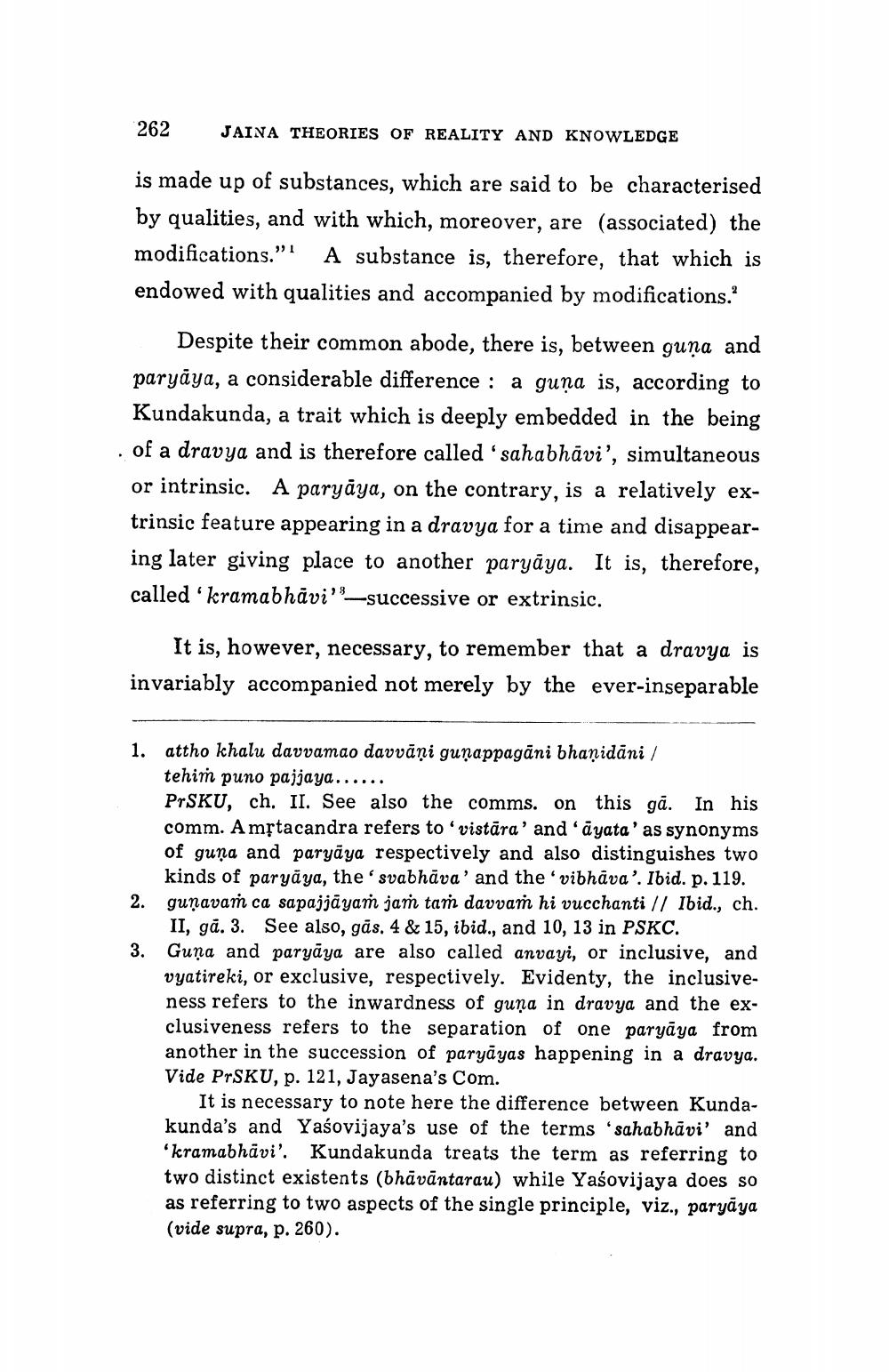________________
262
JAINA THEORIES OF REALITY AND KNOWLEDGE
is made up of substances, which are said to be characterised by qualities, and with which, moreover, are (associated) the modifications." A substance is, therefore, that which is endowed with qualities and accompanied by modifications.'
Despite their common abode, there is, between guna and paryaya, a considerable difference: a guna is, according to Kundakunda, a trait which is deeply embedded in the being of a dravya and is therefore called 'sahabhavi', simultaneous or intrinsic. A paryaya, on the contrary, is a relatively extrinsic feature appearing in a dravya for a time and disappearing later giving place to another paryaya. It is, therefore, called 'kramabhavi'-successive or extrinsic.
It is, however, necessary, to remember that a dravya is invariably accompanied not merely by the ever-inseparable
1. attho khalu davvamao davvāņi guṇappagāni bhaṇidāni / tehim puno pajjaya......
PrSKU, ch. II. See also the comms. on this ga. In his comm. A mṛtacandra refers to 'vistara' and 'ayata' as synonyms of guna and paryaya respectively and also distinguishes two kinds of paryaya, the 'svabhava' and the 'vibhāva'. Ibid. p. 119. 2. gunavam ca sapajjāyaṁ jaṁ tam davvaṁ hi vucchanti // Ibid., ch. II, ga. 3. See also, gas. 4 & 15, ibid., and 10, 13 in PSKC.
3. Guna and paryaya are also called anvayi, or inclusive, and vyatireki, or exclusive, respectively. Evidenty, the inclusiveness refers to the inwardness of guna in dravya and the exclusiveness refers to the separation of one paryaya from another in the succession of paryayas happening in a dravya. Vide PrSKU, p. 121, Jayasena's Com.
It is necessary to note here the difference between Kundakunda's and Yaśovijaya's use of the terms 'sahabhāvi' and 'kramabhävi'. Kundakunda treats the term as referring to two distinct existents (bhäväntarau) while Yaśovijaya does so as referring to two aspects of the single principle, viz., paryāya (vide supra, p. 260).




